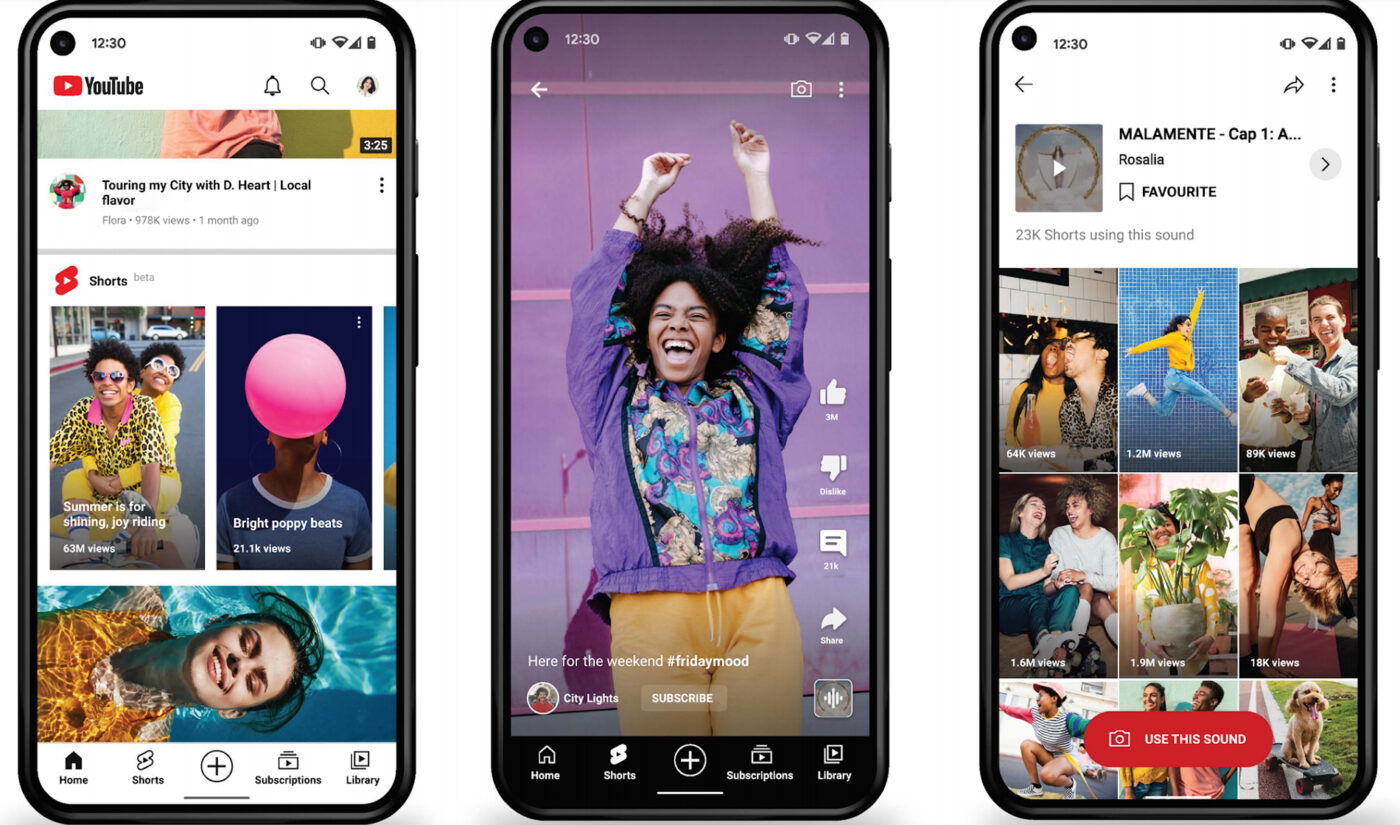One year ago, YouTube debuted the first public version of its TikTok copycat, Shorts. Between then and now, the platform expanded Shorts to all YouTube users around the globe, launched a $100 million fund to pay some of the users making content for it, and saw the average number of daily first-time creators uploading videos to Shorts more than double.
So, what has it learned?
In a “one year of Shorts” wrap-up posted today, YouTube said the past twelve months has taught it to focus on three key aspects of development: “building a creation experience that empowers anyone to create and find an audience; refining our viewer experience to make sure we’re helping people find Shorts that they’ll love and discover new creators; and determining more ways we can reward creators for the Shorts they make that delight the YouTube community.”

Subscribe to get the latest creator news
“Reward,” of course, refers to monetization–understandably a topic of concern for creators, especially those who’ve been raking in hundreds of millions or even billions of views a months with their Shorts content, all without compensation.
Kevin Ferguson, YouTube’s director of global operations and partnerships for Shorts, told Variety that the $100 million Shorts Fund “is the first-stop solution” for monetizing Shorts content.
“We are working on a long-term business model,” he said. “We are lightly testing ad formats right now.”
In its wrap-up post, YouTube said it plans to “[bring] together past, present, and emerging paths to monetization.” It also said that since launching the Shorts Fund, it has “invited thousands of creators to receive a payment.”
YouTube has not disclosed exactly how much it pays creators, but it has said they can earn between $100 and $10,000 monthly. The amount is based on the engagement their Shorts generate. (And Shorts are getting a lot of engagement: Collectively, Shorts videos generate more than 15 billion views per day, Google CEO Sundar Pichai said during Alphabet‘s latest quarterly report.)
It’s worth noting that YouTube treats monetization eligibility for Shorts completely differently than monetization for long-form content.
With long-form content, creators have to be part of the YouTube Partner Program to earn revenue from the ads run on their videos. Shorts creators, however, can get a slice of the fund without being in YPP–and without partaking in all the strings and/or benefits that come with the program, including having more direct contact with YouTube staff for help with any issues.
That might change in the future, though.
“We are dealing with the next generation of mobile creators,” Ferguson told Variety. “We are figuring out how we partner-manage these folks.”
YouTube highlighted a handful of fast-growing creators in its one-year look-back, including DankScole and Katie Feeney, two of the folks we here at Tubefilter have featured in our Creators on the Rise series.
The wrap-up also ran down a list of more things that could change for Shorts in the future, including more separation between Shorts content and long-form content; updates to Shorts’ audio picker so creators will be able to search music genres or bookmark sounds they like; a “new, more precise text timeline editor”; and allowing users to pluck more sounds from long-form YouTube videos that they can then remix and include in their Shorts.
You can read the full wrap-up here.








